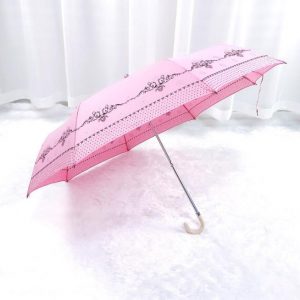Umbrellas hold cultural significance and variations around the world. They are not only practical tools for protecting against rain and sun but are also symbolic in different societies. Here are some examples of how umbrellas are culturally significant in various regions:
- Japan: In Japan, the traditional umbrella is called “wagasa” or “bangasa.” These umbrellas have a distinctive design and are often made from bamboo and washi paper. Wagasa is not only used for rain protection but also as a traditional accessory in Japanese tea ceremonies and festivals. The intricate designs and patterns on the umbrellas often hold symbolic meanings.
- China: Chinese culture also has a long history of using umbrellas. The “Chinese umbrella” or “parasol” is called “san” or “zhongyi.” In Chinese traditional art, umbrellas are frequently depicted as symbols of elegance and beauty. They are also used in various folk dances and performances.
- India: In India, traditional umbrellas are known as “chhatris” or “thotti.” These colorful and vibrant umbrellas are often used in religious processions and during festivals like Holi. They have cultural significance and are associated with joy, celebration, and protection from the elements.
- Thailand: In Thailand, the “Thai umbrella” or “pang kham” is an essential part of traditional Thai culture. These umbrellas are often elaborately decorated with gold and other intricate designs. They are used in religious ceremonies, as props in traditional dance performances, and as decorative elements in festivals and celebrations.
- Greece: In Greece, particularly in the islands, the “karavaki” or “karavakia” is a traditional umbrella-like sunshade used for beachgoers. These sunshades are often colorful and can be seen dotting the sandy shores during the summer months.
- Middle East: In some Middle Eastern countries, the “parasol” or “umbrella” has historical and cultural significance. It has been used as a symbol of authority and protection by rulers and religious leaders.
- Thibet and Nepal: In these regions, the “Bhota,” a traditional umbrella, is not only used for protection from the rain and sun but also holds religious and spiritual significance. It is often seen as a symbol of honor and respect and is used in religious ceremonies and processions.
- Haiti: In Haiti, there is a unique tradition of using brightly colored umbrellas in funeral processions. These umbrellas are considered symbols of celebrating the life of the deceased and providing shade during the funeral rituals.
- South Pacific Islands: In some South Pacific island cultures, umbrellas made from local materials, such as pandanus leaves and coconut fronds, are used for both rain and sun protection. These traditional umbrellas are often an essential part of local customs and ceremonies.
Throughout history and across different cultures, umbrellas have played significant roles beyond their practical use. They often carry symbolic meanings, cultural expressions, and artistic designs, making them a fascinating reflection of human creativity and diversity.








